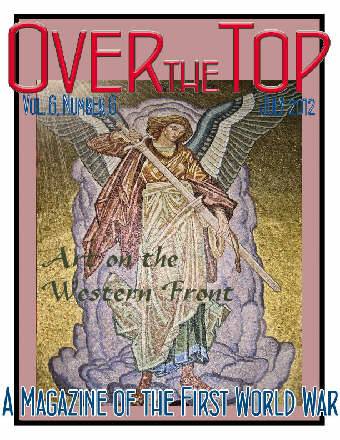


July 1912
Turmoil for the Ottoman Empire
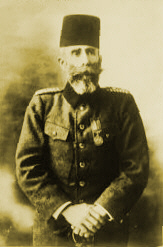
Shevket Pasha
|
The Italo-Turkish War, under way since 1911, had begun to triply undermine the Ottoman Empire by the following July. Italian forces in Libya seized major enclaves along the coast, and its navy had taken Aegean islands and was attempting to close the Dardanelles.
At home a political crisis led to the fall of the Ottoman Minister for war, Mahmud Shevket Pasha, (fated to return later as Grand Vizier and be assassinated), and subsequently, the reigning Grand Vizier and his cabinet, who were forced to resign by the Army command, upset by the Young Turks' reforms and intrusive influence. By the end of the month an unstable union government was formed.
Far and near, the forces of nationalism were being encouraged and were rallying. Rebellion raged in Albania, the nearby island of Ikaria declared its independence, and the Balkan states planned for war. The First Balkan War would begin in October. In January 1913 the resurgent Young Turks would stage a coup after which they would politically and militarily dominate the empire through its demise.
|
TRENCH REPORT: Back from Europe. As promised there are photos below of my 2012 Western Front battlefield tour as well as preliminary information on the 2013 expedition. . .Contrary to what I published in the latest issue of the WW1HA Journal, that essential resource work on the AEF, American Armies and Battlefields in Europe is back in print. You can order it here at the GPO (link)
or get a free download at (link). . .Now on to the news! MH
New at Our Own & Our Friends' Great War Websites
Click on Title or Icon to Access
|
News About the World War One Historical Association's Website
The Association's new Website has just gone online. The homepage address will be the same: ww1ha.org. This is our first phase of implementation. Everything is accessible, but for a few months you will be running into references to our parent organizations, as we convert their resource files to our new look.
|
Meanwhile, preparations proceed at full speed for our annual event:
The WW1HA National Seminar
USMC University, Quantico
7-8 Sept. 2012
Contact: Carol Vandenbruhl
email: cvandenbrul@netscape.net
tel: 248-471-2366
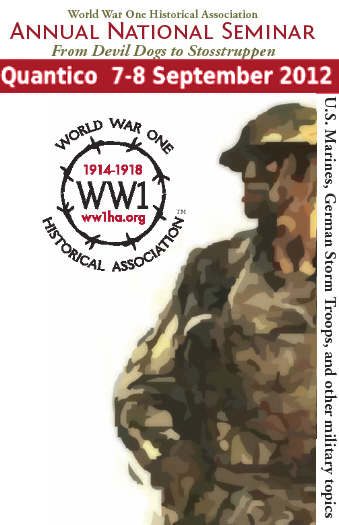
Click on the image above to access full program and registration information.
|
|

Harry T. Fiske Illustration
This is a detail from the original painting now owned by reader Mike McGuire. He believes it is based on an actual account of a French officer leading an attack with his cane. Let us know if you have any details of such a deed. (email)
This Month's Internet Feature
WWI in Contemporary Culture
We have received a burst of announcements about new films, videos, plays and Websites focusing on the Great War. This month we will use our "Internet Feature" column to recognize them.
New Gallipoli TV Mini-Series Announced
War Horse on Stage in Los Angeles Through 29 July 2012
New Vera Brittain Testament of Youth film planned
New WWI Aviation Documentary Uses Peter Jackson Collection
Website on the War Poetry of John Allan Wyeth from Tim Kendall
A Fresh Look at Movie Classic La Grande Illusion
Early Soviet Newsreels Now Available Online
Garth Brooks Music Video Belleau Wood (No, the Christmas Truce did not happen at BW, which was fought over in June 1918, but it's a nice song.)

Walter Krueger, WWII commander of the U.S. Sixth Army, was a staff officer in the AEF for the 26th and 84th Divisions and the Tanks Corps. He has the distinction of being the first member of the U.S. Army to enlist as a private and retire as a four-star general.

The United States did not win the war, but without their economic aid to ease the strain, without the arrival of their troops to turn the numerical balance, and, above all, without the moral tonic which their coming gave, victory would have been impossible.
Basil Liddell Hart, The Real War, 1914-1918 (1930)
|
|
|
Page Two
|
|
|
Gone West
Two Recent Losses
By Editor in Chief Michael Hanlon

Tony Noyes |
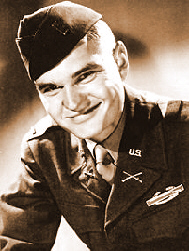
Paul Fussell, 1945 |
Sadly, the World War One community has suffered two notable deaths since our last issue. Tony Noyes was a much-admired battlefield guide, one of the builders of the Western Front Association, a columnist with the Trip-Wire for several years, and a friend. I met Tony through his wife, Christina Holstein, at first via email, then over on the Western Front. He and Christina guided of one of my groups for two days on the St. Mihiel and Verdun battlefields and did a terrific job. Later, Tony would spend several years contributing his month-by-month Western Front "Battle Diary" to these pages.
(WFA Tribute)
Paul Fussell was the author of the most influential interpretation of the literature of the First World War, The Great War and Modern Memory. I have one pleasant personal memory of him I'd like to share. I ran into him at the hotel bar during our 1994 National Seminar in Lisle, Illinois. We bought each other drinks, talking at first mainly about his recent work Thank God for the Atomic Bomb of which I was a big fan. Later he was kind enough to ask about my projects. He could not have been more congenial and down to earth — nothing like the eccentric, sometimes cranky, chap who would later appear occasionally on TV. All of us, of course, looked forward to his talk at the Saturday night banquet with great anticipation. His topic, however, turned out to be an academic examination of literary irony and it hardly had a Great War reference in it. One of my table mates turned to me at one point and asked, "What do you think Joe and Willie [Bill Mauldin's WWII cartoon GIs] would make of this." My answer was that they would have been utterly baffled, as was I. Nevertheless, I'll always cherish my encounter with the famous author. (Obituary)
|
|
The WWIHA Visits the
The Military Vehicle Technology Foundation
In the hills overlooking Palo Alto, California is a dream destination for military history enthusiasts. The vast enclave of the Military Vehicle Technology Foundation contains the largest privately held tank museum in the world. It was started by the late Jacques Littlefield, who passed away in 2009. However, a foundation now controls the collection and makes it available for group visits. In June 2012 the World War One Historical Association had a group visit.
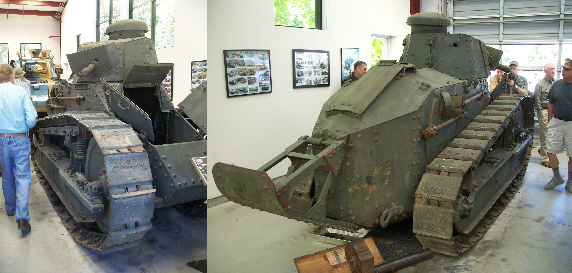
The collection includes over 240 vehicles, with tanks of all sizes, scout vehicles, personnel and supply carriers, and various types of self-propelled weapons. In the photo above, the association members are inspecting an M1917 American-built tank, a version of the Doughboy's FT-17 Renault tank, which Lt. Col. George Patton rode in the first American tank attack in the St. Mihiel Offensive of September 1918.
|
My Western Front Expeditions for Valor Tours, Ltd.
2012 Great War Experience IV
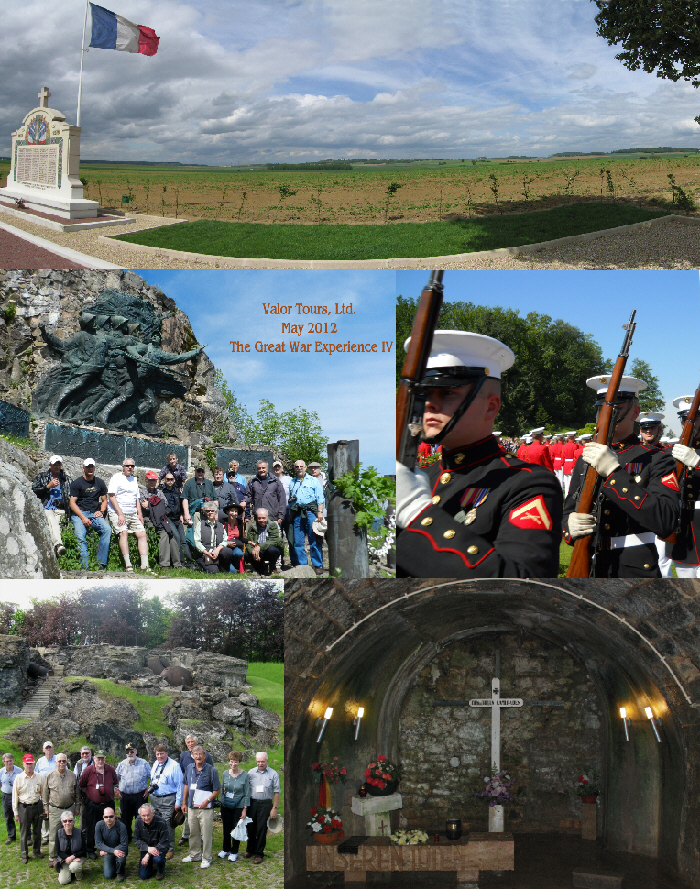
Here are a few of the highlights from my May 2012 Western Front Tour. Top Photo: The field outside Villeroy, France, where the First Battle of the Marne broke out on 5 September 2012. In 2014 this will be the site of the national reenactment of the battle. LT: The group at the 152nd Regiment Monument atop Hartmannswillerkopf in the Vosges Mountains. RT: The USMC Silent Drill Team Belleau Wood Cemetery, Memorial Day. LB: The group at the devastated Fort Loncin, Belgium. RB: German crypt inside Fort Douaumont, Verdun Battlefield.
The Great War Experience V
The Great Legends and Traditions
April 28 - May 6, 2013

Alvin York in the Argonne Forest; Fort de la Pompelle — Defender of Reims; Rodin: La Defense — Verdun;
"Arise Ye Dead!" Trench — St. Mihiel Salient
Our Spring 2013 trip will feature visits to the sites of two dozen of the greatest episodes of endurance and bravery of the war. Focusing on the major French and American battlefields (Champagne, Argonne, Verdun, St. Mihiel, Chateau Thierry/Belleau Wood, and the Marne), we will walk in the footsteps of the French, German, and Americans who created these legends. We are now preparing the trip brochure. Please email us at greatwar@earthlink.net if you would like to receive one.
|
World War I Headlines
in the 21st Century
|
|
|
Subscribe to Our Online Magazine
|
|

|
|
Page Three
|
|
|

The Belgian Army Wins One!
On 12 August 1914, while Liege was under siege, a German cavalry corps struck out toward Louvain. A dismounted Belgian cavalry division fought off attacks near the village of Haelen, west of Liege, from 8 a.m. to 6 p.m. Finally, the Germans withdrew in frustration and Belgium had its first victory of the Great War. Liege, however, fell four days later and the onslaught continued. TL
|
Artist's Depiction of the Battle with Belgian Troops Dismounted
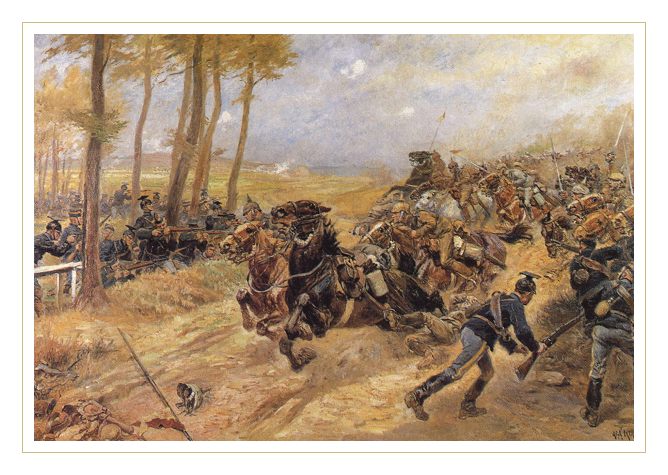
Click Here to access a contemporary account of the Battle of Haelen.
|
|
Last to Fall
by Jim Patton
|
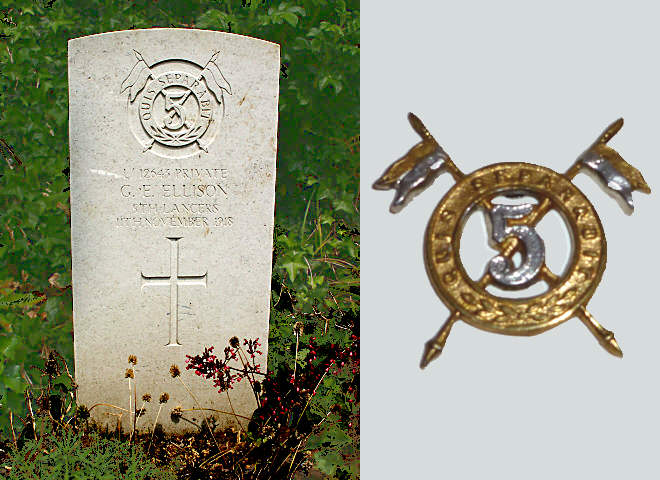
On 11 November 1918, Pvt. George Ellison was the last British soldier to fall in the Great War. He is buried at St. Symphorien Cemetery outside of Mons. His marker is embossed with his regimental insignia, and the same insignia is shown on the right as a cap badge. The 5th (Royal Irish) Lancers began in 1689 as dragoons. They fought at the Battle of the Boyne, at Blenheim, and elsewhere, but the regiment was disbanded and stricken from the rolls ("a memorial of disgrace") for alleged acts of treachery during the Irish Rebellion of 1798. Reorganized as lancers in 1858, the new formation was allowed the antecedents of the disbanded 5th but not its precedence in the line, getting last instead. The new 5th served in India, Egypt, and South Africa before going to France in August 1914. At Cambrai Pvt. George Clare won a posthumous VC, one of only 5 VCs won by British cavalry on the Western Front. The regiment was briefly disbanded in 1921 but was partially reconstituted and merged to form the 16th/5th Lancers (remember that the 5th was junior to the 16th ). Today the heritage rests with The Queen's Royal Lancers
|
Douglas MacArthur's Footlocker
Contributed by Steve Miller
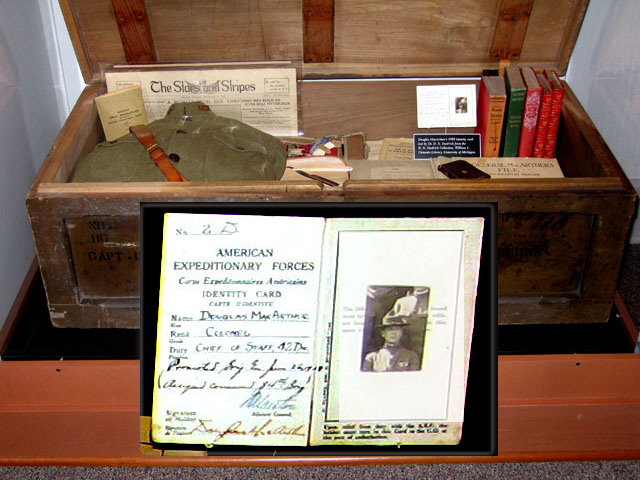
|
WW1HA member Steve Miller is a documentarian of World War One locales, especially museums. You will find many of his photos on the Association's Website. Here we have a revealing composite of photos Steve took at the General Douglas MacArthur Memorial in Norfolk, Virginia. It shows a blowup of the General's identity card with photo and the contents of his footlocker. The locker contains some interesting items: uniform with Sam Browne belt, sewing kit, personal file of 83rd Brigade of the 42nd Division that MacArthur commanded, a razor set, cigarette case presented to the general by his troops, identity card, Catholic and Jewish prayer books, first issue of Stars and Stripes newspaper,
pamphlets: "Use of Mines in Trench Warfare,"
"Bayonet Training," and "Infantry Drill Regulations,"
books: Minor Tactics,
Richard Harding Davis's novel Captain Macklin's Memoirs,
The Cavalry,
two volumes of Napoleon's writings.
|
|
|
 |
Tomlinson Book Prize
New Award Design
|
|
Carrying on a tradition initiated by the WFA-USA, the World War One Historical Association awards a prize for the Best Work of History in English on World War One each year. The prize consists of a check for $3,000 and a bronze plaque (see photo). The award winner is chosen by a panel chaired by Professor Dennis Showalter of Colorado College, a past President of the Society for Military History.
Here is the newly designed award plaque inscribed with the name and title of the latest winner, Sean McMeekin, author of The Russian Origins of the First World War. (link)
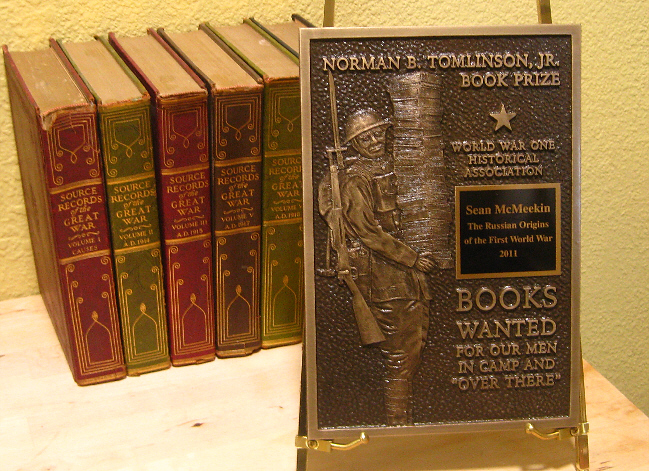
A Classic Reissued
Edith Wharton's
Fighting France, From Dunkerque to Belfort
Reviewed by Bruce Sloan
Sometime after her divorce in 1913, Edith Wharton moved to Paris. Helped by influential French government connections, she was one of the few foreigners allowed to travel to the front lines. Wharton described those trips in a series of articles, originally appearing in Scribner's Magazine in 1915. These articles became part of The War on All Fronts" series, originally published by Charles Scribner's Sons 1919.
The articles begin with the outbreak of war and the mood of the populace around Paris, from "We don't want war; this kind of thing has got to stop" to the gradual acceptance of martial law and total war.
Wharton describes four tours of the front, the first being to the Argonne at the end of February 1915. Motoring east from Paris, she passes through Châlons, where she first encounters the " 'éclopés' - the unwounded but battered, shattered, frostbitten, deafened and half paralyzed wreckage of the awful struggle." Farther east she first encounters the ruined village of Auve, "a mere waste of rubble and cinders...", then on to Verdun, south to Bar-le-Duc, and back to Paris through Vitry-le-François.
The next trip, in mid-May, was to the Lorraine. Approaching Commercy, on the Meuse, she heard the first sounds of the front. On to Nancy, "the most beautiful town in France," where she lunched with the General Staff. (She is really connected!) North, along the Moselle, to Pont-à-Mousson, where, in August, the German offensive was stopped and a memorial shaft is inscribed: Here, in the year 362, Jovinus defeated the Teutonic hordes.
In mid-June, she is off to the north, where she encountered the British khaki, and even the villages look English! With the British in Cassel, Poperinghe, and Ypres (Ieper), which had "been bombarded to death,.." In Cassel she hears the big siege gun of Diksmuide as it bombards Dunkerque. In Nieuport, which "seems to have died in a colic," the Belgian troops are quartered in ruined basements. Along the coast to La Panne and Dunkerque, then south to St. Omer, through British and Indian troops streaming north, and back to Paris.
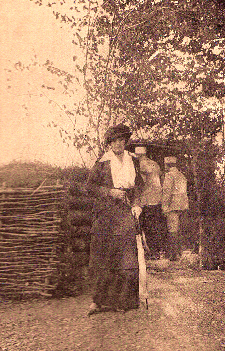
Visiting a French Outpost |
On 13 August, after inspecting one of the new Red Cross sanitary motor units in Reims and viewing the front, she set out for re-conquered Alsace, hitherto inaccessible to even highly placed French officials. Up into the Vosges above Thann, she meets the "chasseurs Alpins," rides mules and scrambles up through mud, trenches, and tunnels to visit the front lines and even forward outposts!
Throughout her travels, she is visiting hospitals, "ambulances," officials, and, always, the General Staff. She concludes these articles with "The Tone of France," which is a very sympathetic look at the character of the French at war. I would heartily recommend this book as a narrative by a noncombatant, written at the time. Her impressions of the people, troops, landscape, villages, and towns are quite revealing.
Edith Wharton worked tirelessly in charitable efforts for refugees throughout the war. In 1916 she was named a Chevalier of the Legion of Honor in recognition of her commitment to the displaced.
Fighting France, From Dunkerque to Belfort, Edith Wharton, Hesperus Press, 2010, ISBN: 978-1843914518.
|
|
|
| |










